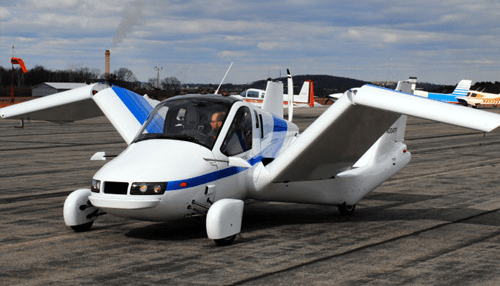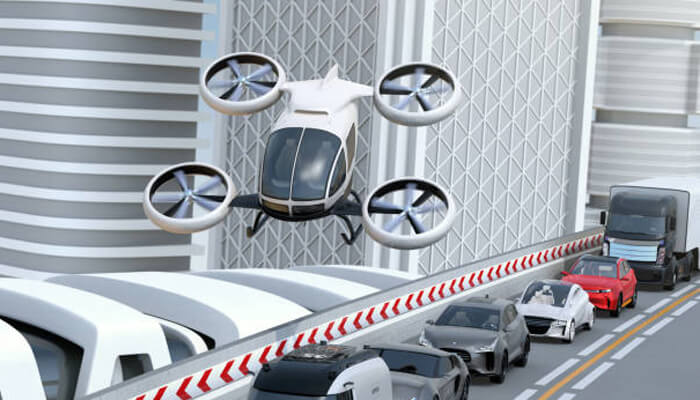On the creating once-over of Chinese acquisitions of US-based companies, one late course of action scrutinizes like something from a science fiction novel. Geely, an automaker from Hangzhou, China, announced on Nov. 13 it had eaten up Terrafugia, a Massachusetts-based startup developing a flying cars.
Ordinary customers likely haven’t thought about both of these associations. In any case, it’s exceptionally possible they will hear more from no short of what one of them later on. Geely’s purchase of Terrafugia is just the latest in a progression of purchases the Chinese association has made abroad. Additionally, it shows how the little-known car maker justifies seeing, as new tech creatures and legacy brands strive for prevalence in the automotive industry’s next wave.
Zhejiang Geely Holding Group was set up in 1986, making it one of the earlier Chinese car makers to start up with no formal associations with the organization. It offers automobiles under its own picture in China, where it remains a bit player dominated by state-had enterprises. Geely Auto, its Hong Kong-recorded unit, got just 3.1% of China’s passenger car market in 2016, according to the company’s most recent yearly report. In any case, it’s eventually the number-two select car maker, and analysts expect its take of the domestic market to increase in the coming years.
Geely Holding staggered the global vehicle industry when it acquired Volvo from Ford for $1.8 billion of each 2010. In the year before the course of action, the Swedish carmaker had pre-tax losses of $653 million on $12.4 billion in revenue. However Geely adequately renewed the brand—in 2016, it earned working advantages of $1.24 billion, and sold a record 534,332 cars. Analysts and Volvo employees credit the turnaround to Geely’s access to the China market (the country is Volvo’s second-greatest market, behind Western Europe), and besides its capacity to finance Volvo while up ’til now preserving the Swedish teams autonomy.
“You could about say that by not doing that much to the extent changing the operations of Volvo, they did a lot of good,” says James Chao, who looks at China’s vehicle industry at IHS Markit. “Their half and halves and their SUV lineup is completely appealing, and that is under Geely’s watch,” he adds.
Following that deal, Geely has made more purchases of abroad car makers.
In 2013 it acquired London Taxi Company (paywall), the UK-based maker of London’s municipal cabs (by then known as Manganese Bronze), for £11 million ($17.5 million). Over four years later, it opened a plant in the West Midlands to convey electric cabs. “This an amazing story of a company that was on its knees in 2013,” a regional trade union delegate told the Telegraph upon the plant’s launch.
This year Geely bought a controlling stake in UK-based Lotus, the sports car brand best known for its appearance in a James Bond film, and for helping engineer Tesla’s first vehicle, the Roadster. It finalized those negotiations nearby a 49.9% stake in Malaysia-based carmaker Proton (both Proton and Lotus were owned by Malaysian conglomerate DRB-Hicom). The previous buy could give Geely a shot at restoring an iconic luxury, while the last could enable it to make inroads into Southeast Asia.
Terrafugia, be that as it may, is a totally different company in comparison to alternate ones Geely has purchased or invested in.
Set up in 2006 by a group of MIT alumni, Terrafugia has spent the earlier decade building vehicles that travel both on-road and in the air—however its most totally recognized vehicle is all the more a mutant “car plane” than a Back to the Future-style auto that glides nimbly through space.
As Quartz’s Mike Murphy illustrates, the companies building “flying cars” routinely have overall one of a kind elucidations of that explanation. Aeromobil’s $1 million vehicles have two car Esque front wheels joined to a head that contains a cockpit, for illustration, while Ehang’s 184 looks like a more noteworthy variety of the drones it has been selling for years.
As per video demonstration, Terrafugia’s most recent model, the Transition, showings like a car when on the ground and a plane when in the air. As shown by the company, when grounded, it can park in an ordinary garage, and travel at “highway speeds” using unleaded automotive gasoline. It stretches out retractable wings to lift off from a runway and can move at a range of 400 miles and the best speed of up to 100 miles per hour.
The Transition has obtained approval from The National Highway Traffic Safety Administration (NHTSA) to land in the US, however, Terrafugia says it won’t be sold to buyers until mid-2019.
By 2023, in the meantime, Terrafugia might want to release a vertical take-off and landing (VTOL) vehicle that can take-off by floating straight up—rather than impelling upwards and horizontally, like a plane. The company released a video (link) showing the design of a vehicle it calls the TF-X, which looks much closer to a sci-fi style “flying car.”
Notwithstanding those due dates, Terrafugia has a habit of over-promising and under-delivering. As far back as 2008, the company has consistently missed its deadlines to put the Transition under the control of purchasers.
It’s possible that Geely could bring Terrafugia out of a notch, much like how it revived Volvo. Terrafugia says its engineer headcount has tripled in the past quarter, and Geely has named Chris Jaran, past head of Bell Helicopter China, as Terrafugia’s new CEO.
Regardless, Volvo and Geely’s unique vehicles are all in all basically traditional cars. Terrafugia’s “flying cars” are something inside and out new, and they’ll be up against attempts from Google, Uber, Airbus, and a run of various companies. An extensive parcel of these companies has absolutely phenomenal considerations of what the “flying cars” without limits will truly take after. Presently, Geely’s figure is in an indistinguishable class from anyone else’s.



